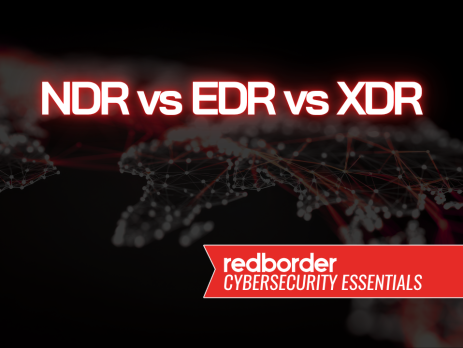NDR vs EDR vs XDR | Understanding the Differences in Cybersecurity
Cybersecurity terminology is quite often very confusing. Organizations are told they need EDR, they need NDR, oh and they need XDR, but what does each one actually do, and how do they fit together? If this is a question you keep asking yourself… You’re in the right place.
Endpoint Detection and Response (EDR)
EDR or Endpoint Detection and Response, focuses on individual devices such as laptops, desktops, servers and sometimes even mobile devices. Its primary function is to detect and respond to threats that directly impact endpoints. EDR solutions continuously monitor device activity for anomalies and known malware. For example, if ransomware begins encrypting files on a workstation, EDR can detect the unusual process and isolate the device before the malware spreads.
Studies have shown that endpoints remain one of the most common entry points for attacks, with organizations experiencing breaches through phishing or malicious downloads. EDR provides the necessary visibility to contain these threats at the source. However, EDR’s scope is inherently limited to the devices it protects. If an attacker bypasses endpoint defenses, by moving laterally through the network or exploiting unmonitored systems, EDR may not detect the activity. This limitation highlights why organizations often pair EDR with network-focused solutions.
Network Detection and Response (NDR)
NDR addresses threats from a broader perspective by monitoring network traffic and communications between systems. Unlike EDR, which focuses on individual devices, NDR analyzes patterns across the entire network, including east-west traffic between internal systems and north-south traffic to and from external sources. Modern NDR solutions also analyze encrypted traffic, using techniques such as TLS inspection and machine learning-driven anomaly detection to identify threats that would otherwise remain hidden.
Real-world cases demonstrate NDR’s critical role. In 2024, several high-profile ransomware attacks in the manufacturing sector involved malware moving laterally within corporate networks before triggering alarms. EDR alone often failed to detect these activities early because the endpoints themselves showed minimal suspicious behavior. NDR’s capability to monitor network flow allowed security teams to identify anomalous patterns, trace the lateral movement of the malware and respond before critical systems were compromised.
The main strength of NDR lies in this network-wide visibility, particularly in complex environments with hybrid cloud infrastructure and connected operational technology (OT) systems. Yet, NDR does not provide the same level of granularity as EDR for individual devices, meaning it is most effective when used in conjunction with endpoint-focused solutions. In complex environments, it fills the gaps EDR can’t cover, giving security teams the context to detect and act on threats before they escalate.
Extended Detection and Response (XDR)
XDR aims to unify detection and response across multiple security layers. By integrating data from endpoints, networks, cloud services, identity systems, and more, XDR provides a centralized view of an organization’s security posture. This correlation of signals improves detection accuracy, reduces false positives and enables faster investigations.
For instance, an XDR system could correlate a suspicious login from a cloud service, unusual network traffic between internal servers and a potential malware event on an endpoint. Together, these signals may indicate a coordinated attack that would have been difficult to detect using EDR or NDR alone. Reports from Gartner and other cybersecurity analysts note that organizations adopting XDR see improved incident response efficiency and reduced mean time to detect (MTTD) threats, particularly in complex environments with multiple attack surfaces.
However, XDR also comes with challenges. Integrating disparate data sources requires careful configuration and skilled personnel to interpret alerts and orchestrate responses. While XDR offers a comprehensive view, it is not a replacement for specialized solutions; rather, it amplifies the effectiveness of both EDR and NDR by connecting their insights and providing context across the environment.
Choosing the Right Approach
No single solution can address every threat on its own. EDR, NDR and XDR serve different but complementary purposes. EDR protects the individual devices where threats often enter. NDR monitors the broader network to catch hidden lateral movement and internal threats. XDR connects these layers, integrating signals across endpoints, networks, cloud and identity systems to provide actionable insights and a holistic view.
Deciding which approach is most appropriate depends on the organization’s size, complexity and available security expertise. A small business with fewer endpoints may find EDR sufficient, while a global enterprise with hybrid IT and OT environments may require NDR or XDR to detect sophisticated attacks. Ultimately, understanding the strengths and limitations of each technology is essential for building a layered cybersecurity strategy that minimizes risk and reduces response times.


